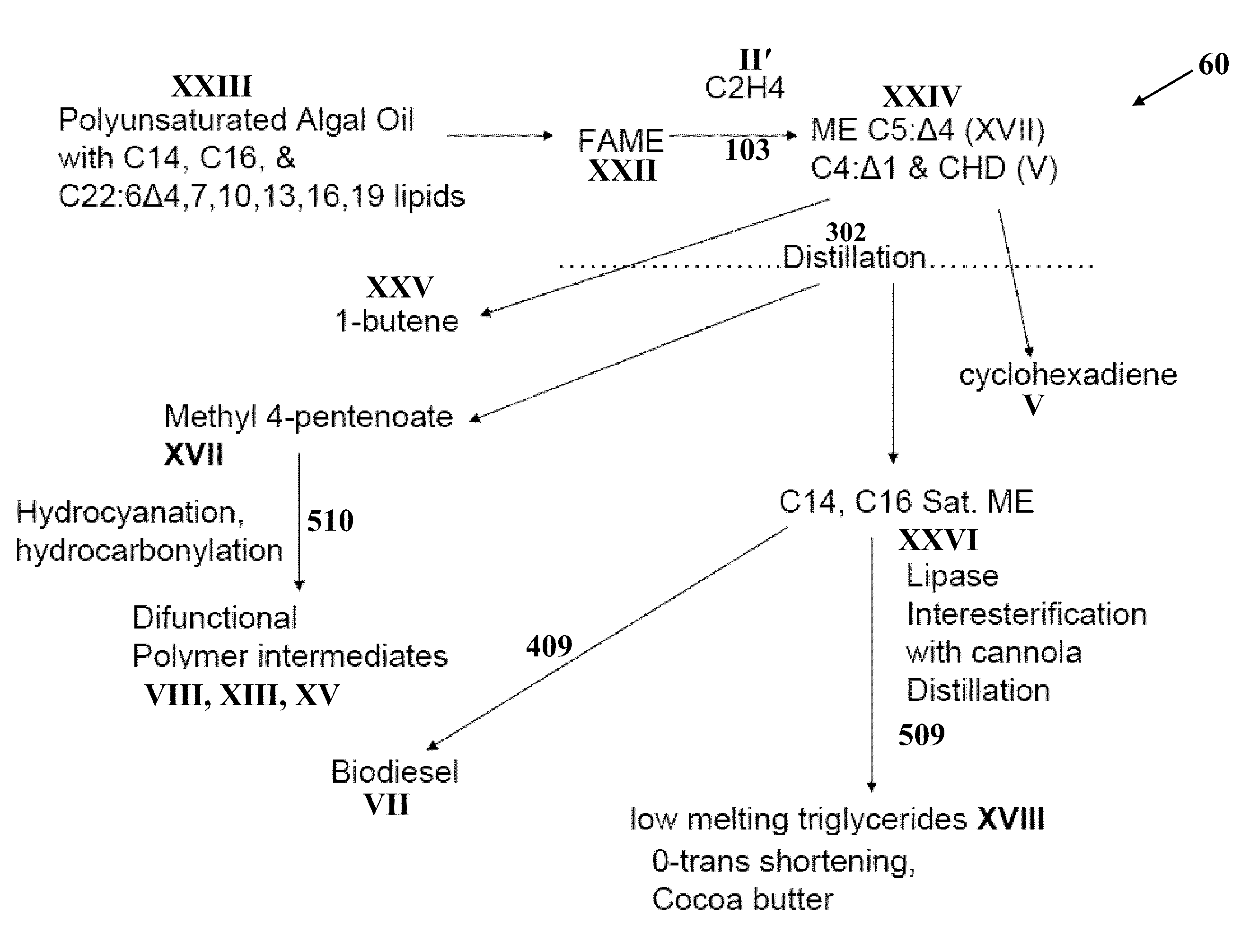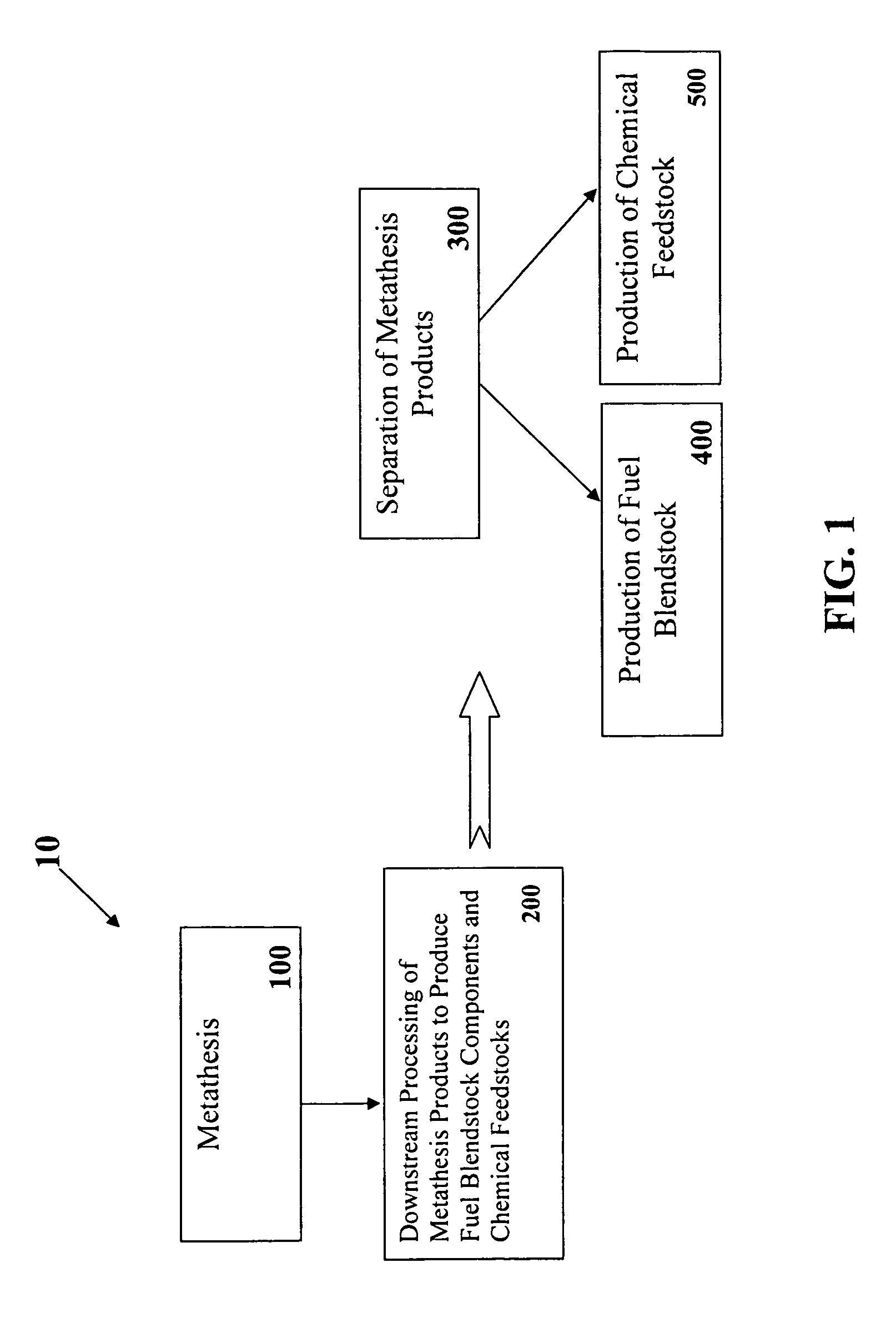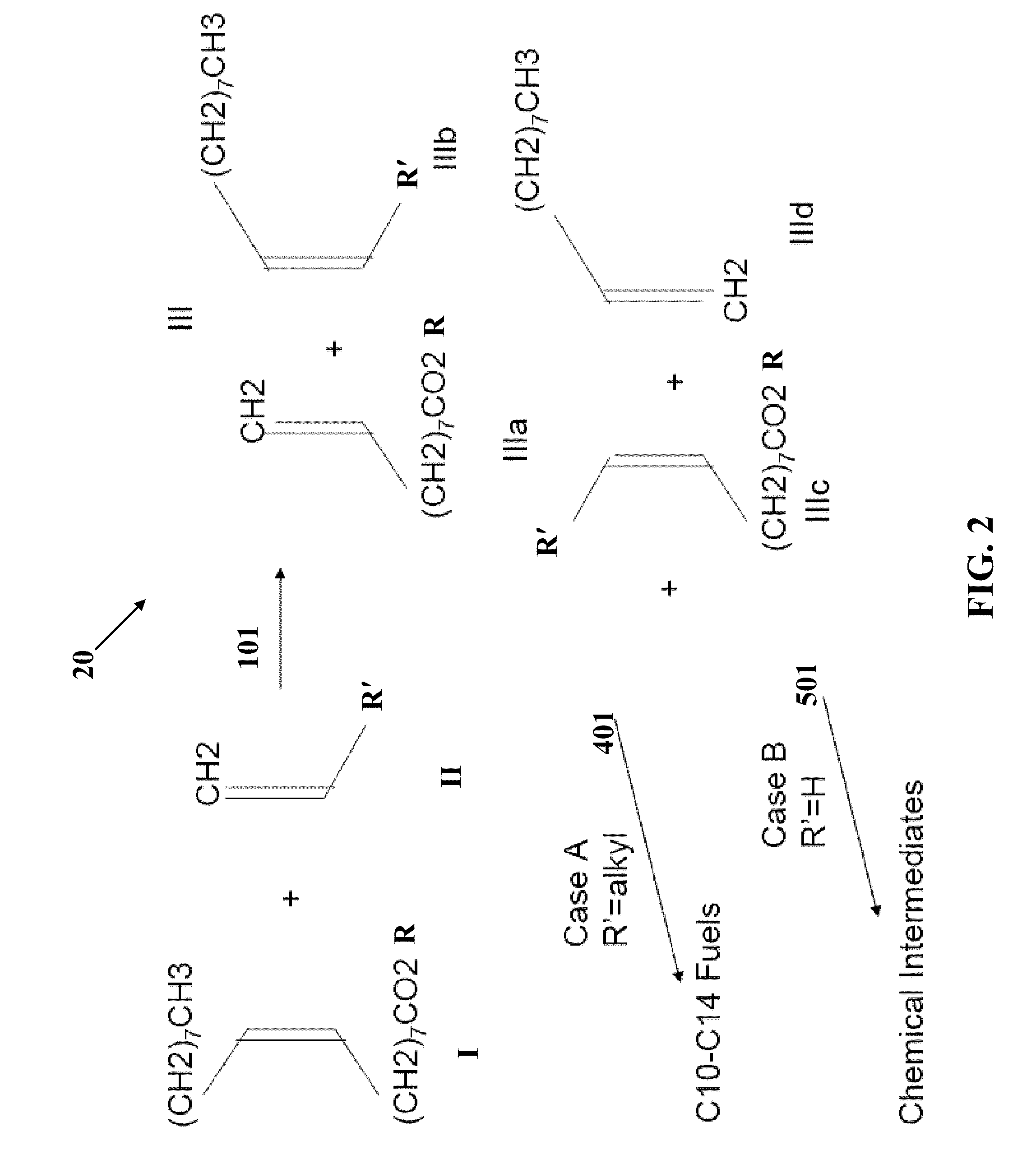Chain-selective synthesis of fuel components and chemical feedstocks
a technology of chemical feedstocks and fuel components, applied in the direction of hydrocarbon by metathesis reaction, amino compound preparation, fatty acid chemical modification, etc., can solve the problem that feedstocks are generally converted into products with limited usefulness, and achieve the effect of low melting poin
- Summary
- Abstract
- Description
- Claims
- Application Information
AI Technical Summary
Benefits of technology
Problems solved by technology
Method used
Image
Examples
examples
[0073]Partial cross-metathesis of safflower oil with ethylene (1:10 molar ratio) was conducted in a stirred autoclave at 25° C. with a commercially available metathesis catalyst (Grubbs second-generation catalyst). Safflower oil contains mostly oleic (18:1) and linoleic acid (18:2) and small amounts of saturated acids. Olefin products were separated from the shortened-chain glyceryl esters by distillation. These olefin products included 1,4-cyclohexadiene, 1-heptene, 1-decene, 6-dodecene, and 6-pentadecene and small amounts of 1,4-decadiene, 1,4-tridecadiene, 9-octadecene, 6,9-octadecadiene, and 9,12-uncosadiene and very small amounts of other hydrocarbons. Several of the products indicate incomplete reaction with the ethylene, which is beneficial for fuel production.
[0074]The olefins are distilled such that a “kerosene range” cut (C10 to C15) is obtained, which is then hydrotreated with a catalyst that partially isomerizes and hydrogenates the olefins to produce a mixture of paraff...
PUM
| Property | Measurement | Unit |
|---|---|---|
| Melting point | aaaaa | aaaaa |
| Melting point | aaaaa | aaaaa |
| Temperature | aaaaa | aaaaa |
Abstract
Description
Claims
Application Information
 Login to View More
Login to View More - R&D
- Intellectual Property
- Life Sciences
- Materials
- Tech Scout
- Unparalleled Data Quality
- Higher Quality Content
- 60% Fewer Hallucinations
Browse by: Latest US Patents, China's latest patents, Technical Efficacy Thesaurus, Application Domain, Technology Topic, Popular Technical Reports.
© 2025 PatSnap. All rights reserved.Legal|Privacy policy|Modern Slavery Act Transparency Statement|Sitemap|About US| Contact US: help@patsnap.com



